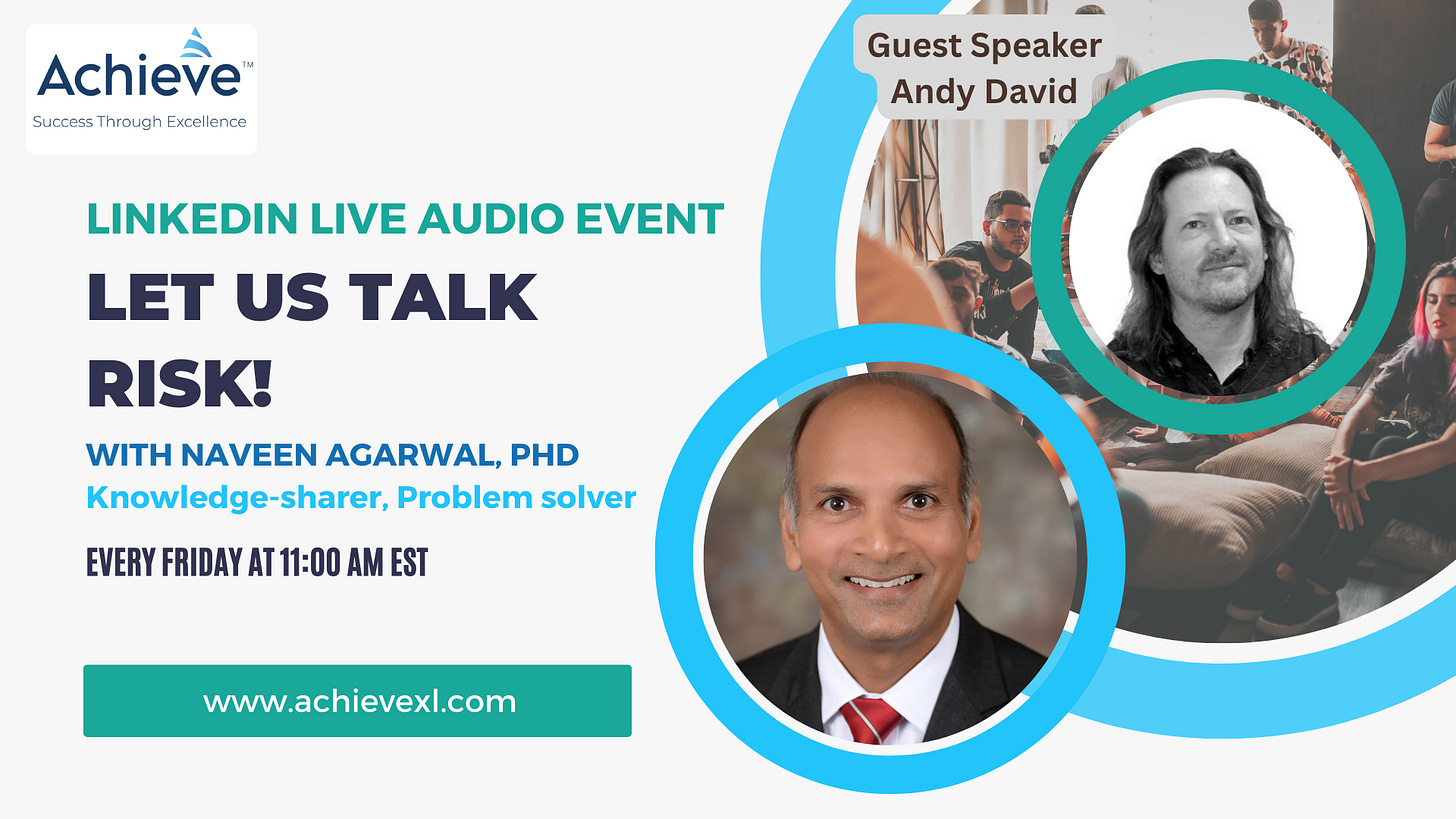Risk lessons learned from working on a hydrogen-powered car
Insights from a Let's Talk Risk! conversation with Andy David.
Note: this article highlights key insights gained from a conversation with Andy David as part of the Let’s Talk Risk! with Dr. Naveen Agarwal series on LinkedIn. Listen to the full recording of the discussion below.
Key takeaways
Design choices are driven by a central idea: If you look at a conventional car and simply think about replacing its gas tank by another fuel source, you have to operate within the constraints of current designs and expectations. Breakthrough innovations, on the other hand, start from a completely different core idea. Instead of designing an alternate fuel source for an existing car, why not design a new car around the new fuel source such as a hydrogen fuel cell? You will be thinking about a new way to move around, not about using a new fuel source to keep on moving the same way. This paradigm shift leads to design choices under a completely new set of constraints. It is not necessarily more risky to use hydrogen compared to gasoline to power a car. Rather, it is about your design choices for a new system operating under new constraints.
Hydrogen is a source of energy but that does not mean a hydrogen-powered car is dangerous: Hydrogen is a fuel and a source of energy. Gasoline is also a fuel and a source of energy. Both can be considered as sources of hazard, even though a common perception is that hydrogen is more dangerous than gasoline. Just because a hazard source is present in the system does not mean it is dangerous or unsafe.
Safety is an output of our risk mitigation activities: Safety is our response to hazards we have identified and actions we have taken to mitigate risks. When we reduce risk(s) to as low as practically possible, we achieve safety in the context of the intended use. Our work starts involves hazard analysis and risk assessment (HARA) by looking at the hydrogen-powered car as a system. We consider different states of the system from both the functional and an operational view. The analysis involves identifying different scenarios where a car could malfunction through a combination of events that eventually activate one or more hazards. Functional safety standards provide guidance and requirements for risk reduction. In the end, safety is a result of our risk mitigation activities and only as good as the quality and robustness of our work.
Standards are not mandatory but are considered to be state of the art, and therefore, stakeholders expect you to follow them: There is no legal requirement to follow one or more industry-specific standards for regulatory compliance. However, it is a good practice. Standards reflect the consensus view of industry experts as the state of the art. There is generally no good reason for not following applicable standards, especially when working with mature technologies and products. When you implement the guidance and requirements of consensus standards, it is much easier to demonstrate safety and effectiveness. When working with less mature technologies in futuristic applications, it may be difficult to find applicable standards. However, you should still understand the basic industry expectations where you intend to position your product. A hydrogen-powered car is still a car; therefore it is a good idea to use applicable functional safety standards such as ISO 26262 for road vehicles. Many standards are based on exchange of ideas and best practices across different industries. Therefore, you should also look outside of your immediate industry to find other relevant standards.
About Andy David
Andy David is an expert in safety critical embedded software development with many years of experience across different industries. He started his career with an internship at IBM followed by full time roles in heavy equipment, aerospace and automotive industries. He is the MD and Principal Consultant at A2D Consultancy, providing high-integrity software engineering, process and compliance consulting services. One of his current project is a hydrogen-powered car at Riversimple, a UK-based automotive startup.
About Let’s Talk Risk! with Dr. Naveen Agarwal
Let’s Talk Risk! with Dr. Naveen Agarwal is a weekly live audio event on LinkedIn, where we talk about risk management related topics in a casual, informal way. Join us at 11:00 am EST every Friday on LinkedIn.
Disclaimer
Information and insights presented in this article are for educational purposes only. Views expressed by all speakers are their own and do not reflect those of their respective organizations.





